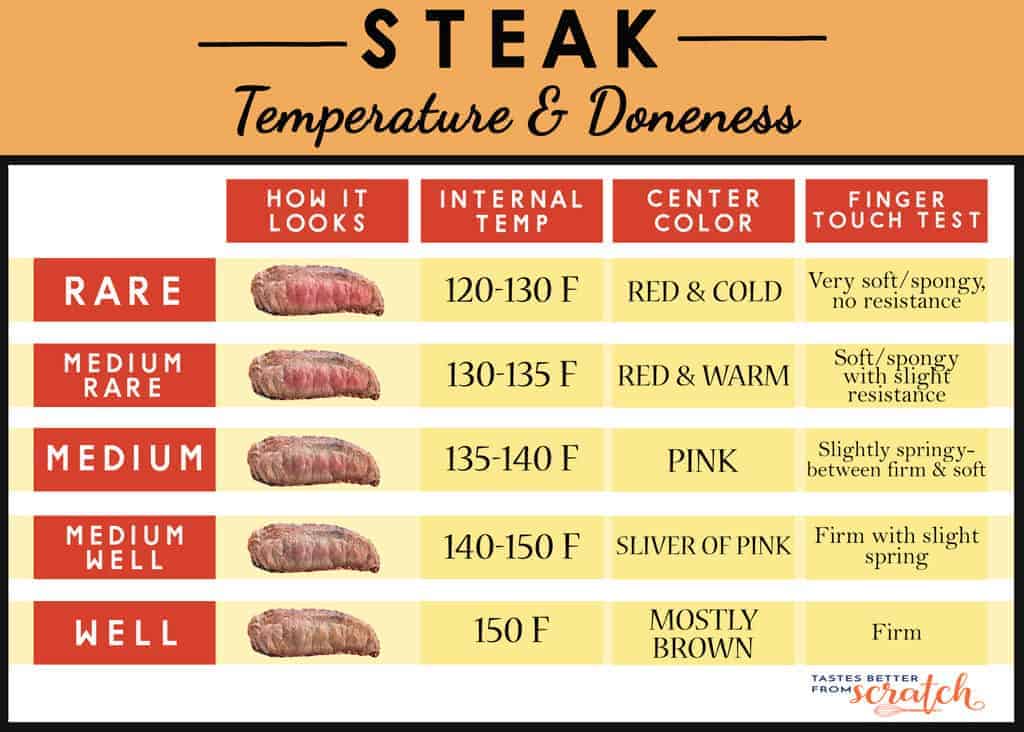Mastering the Art of Cooking Steak: Your Ultimate Guide to the Steak Temp Chart
Cooking the perfect steak is an art form that requires precision, patience, and a keen understanding of temperature. Whether you prefer your steak rare, medium, or well-done, knowing the correct steak temperature is crucial to achieving that ideal taste and texture. In this comprehensive guide, we delve into the steak temp chart, offering insights and tips to help you become a steak-cooking maestro.

Key Takeaways

- Understanding the steak temp chart is essential for cooking steak to your desired doneness.
- Each level of doneness has a specific internal temperature range.
- Using a meat thermometer ensures accuracy and consistency.
- Resting your steak after cooking is crucial for retaining juices.
Understanding the Steak Temp Chart
The steak temp chart is a guide that outlines the internal temperatures needed to achieve different levels of doneness in steak. From rare to well-done, each level has a specific temperature range that corresponds to the texture and color of the meat.
Why Temperature Matters
Temperature is the defining factor in determining the doneness of a steak. It influences the color, texture, and juiciness of the meat. Cooking steak to the correct temperature ensures that it is safe to eat while also achieving the desired taste and texture. Overcooking can lead to a dry, tough steak, while undercooking can result in a steak that is too raw for some palates.
Steak Doneness Levels
Here is a breakdown of the different levels of steak doneness according to the steak temp chart:
- Rare: 120°F to 130°F (49°C to 54°C) – Cool red center, soft and tender texture.
- Medium Rare: 130°F to 135°F (54°C to 57°C) – Warm red center, firmer than rare.
- Medium: 135°F to 145°F (57°C to 63°C) – Warm pink center, more firm and springy.
- Medium Well: 145°F to 155°F (63°C to 68°C) – Slightly pink center, firm and slightly springy.
- Well Done: 155°F and above (68°C and above) – Little to no pink, very firm texture.
How to Use a Meat Thermometer

To accurately measure the internal temperature of your steak, a meat thermometer is an indispensable tool. Here’s how to use it effectively:
- Insert the Thermometer: Place the thermometer into the thickest part of the steak, avoiding bones or fat.
- Check the Temperature: Wait for the temperature reading to stabilize before checking.
- Remove from Heat: Once the steak reaches the desired temperature, remove it from the heat source.

The Importance of Resting Your Steak
After cooking, it’s essential to let your steak rest for a few minutes. This allows the juices to redistribute throughout the meat, ensuring a moist and flavorful steak. Resting typically takes about 5 to 10 minutes, depending on the thickness of the steak.
Tips for Perfectly Cooked Steak
- Choose the Right Cut: Different cuts of steak have varying fat content and textures, affecting cooking time and temperature.
- Season Generously: Salt and pepper are classic seasonings, but feel free to experiment with herbs and spices.
- Preheat Your Pan: Ensure your pan or grill is hot before adding the steak to achieve a good sear.
- Use the Right Oil: Choose an oil with a high smoke point, such as canola or grapeseed oil, for searing.

Common Mistakes to Avoid
Even seasoned cooks can make mistakes when cooking steak. Here are some common pitfalls to avoid:
- Overcrowding the Pan: Cook steaks in batches to ensure even cooking and a good sear.
- Not Allowing the Steak to Come to Room Temperature: Letting the steak sit at room temperature for about 30 minutes before cooking helps it cook more evenly.
- Cutting the Steak Too Soon: Cutting into the steak immediately after cooking can cause juices to escape, leading to a dry steak.
Mastering the steak temp chart is a crucial step in becoming proficient at cooking steak. By understanding the different levels of doneness and using a meat thermometer, you can ensure that your steak is cooked to perfection every time. Remember to let your steak rest after cooking and avoid common mistakes to enhance your cooking skills further. With these tips and insights, you’re well on your way to becoming a steak-cooking expert.